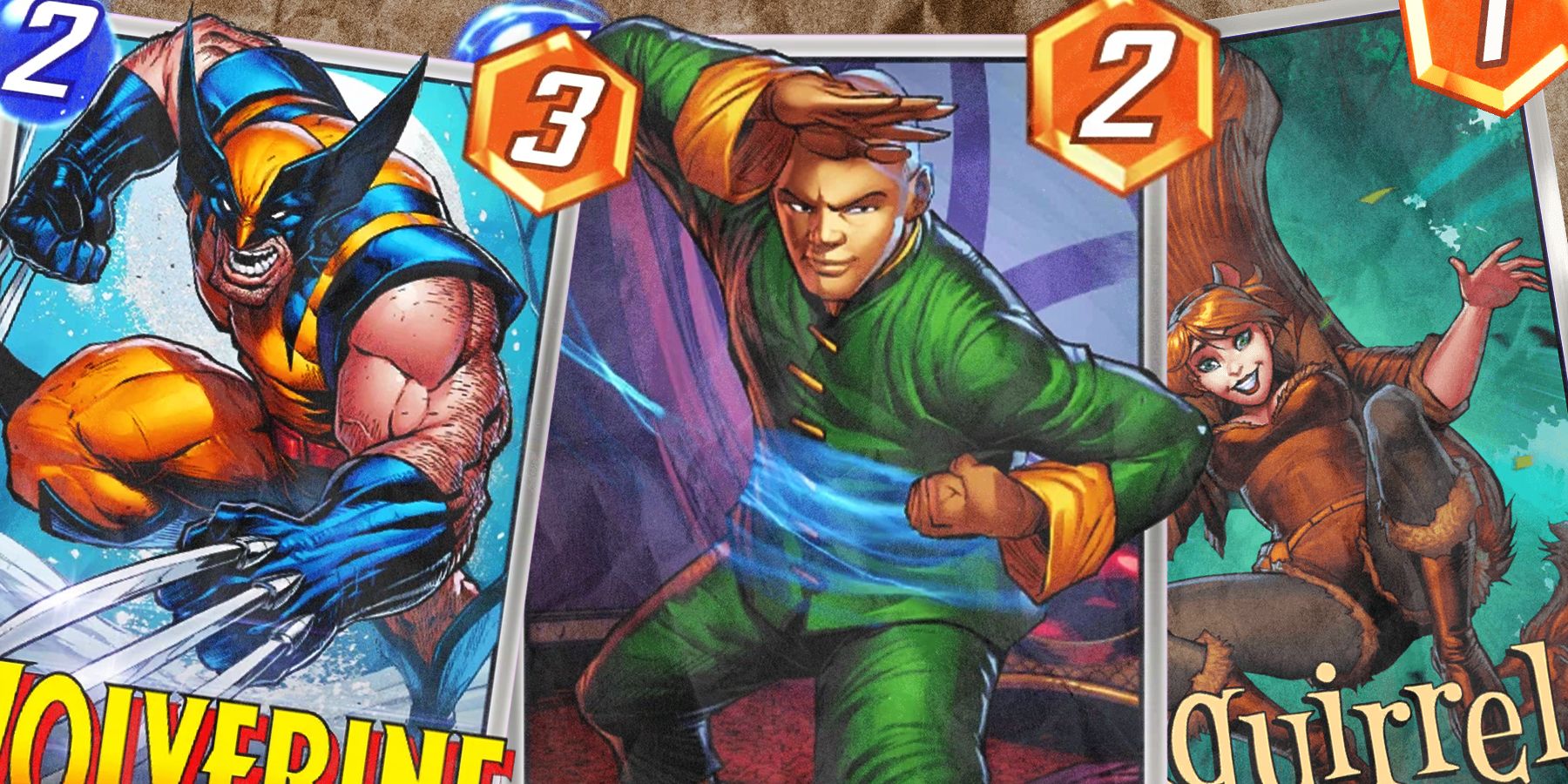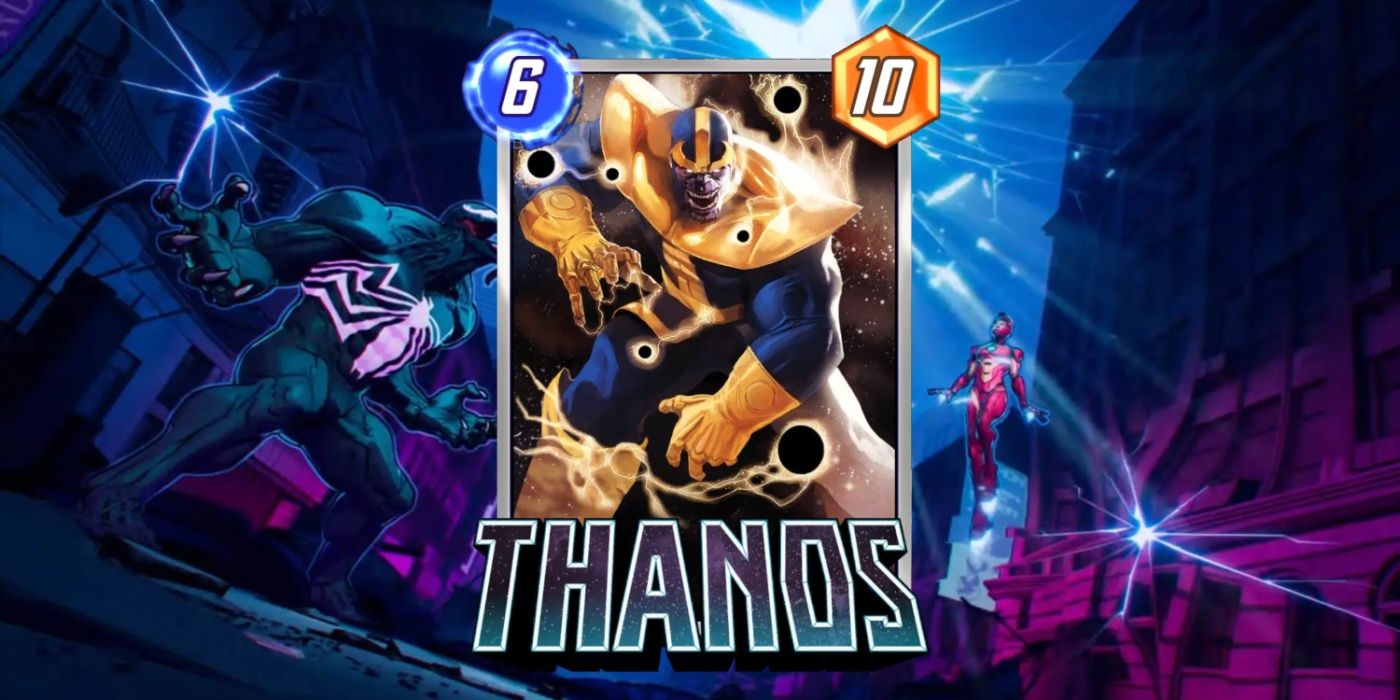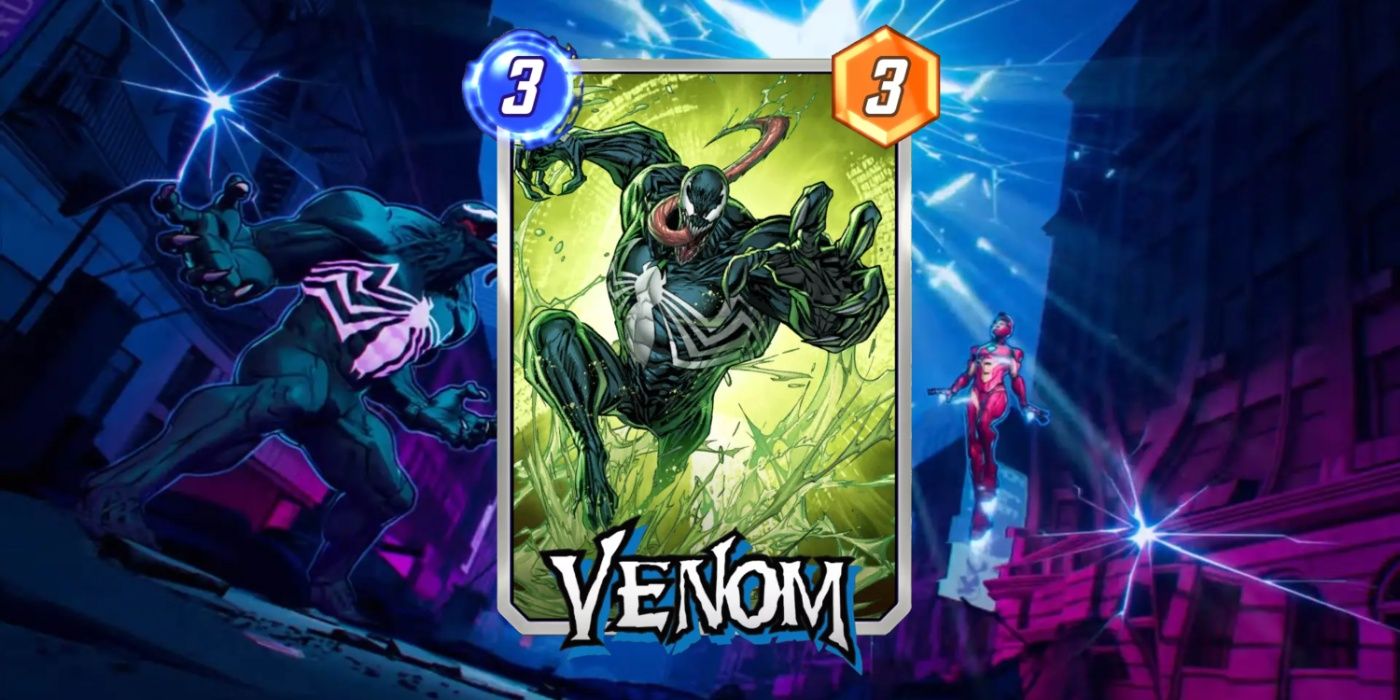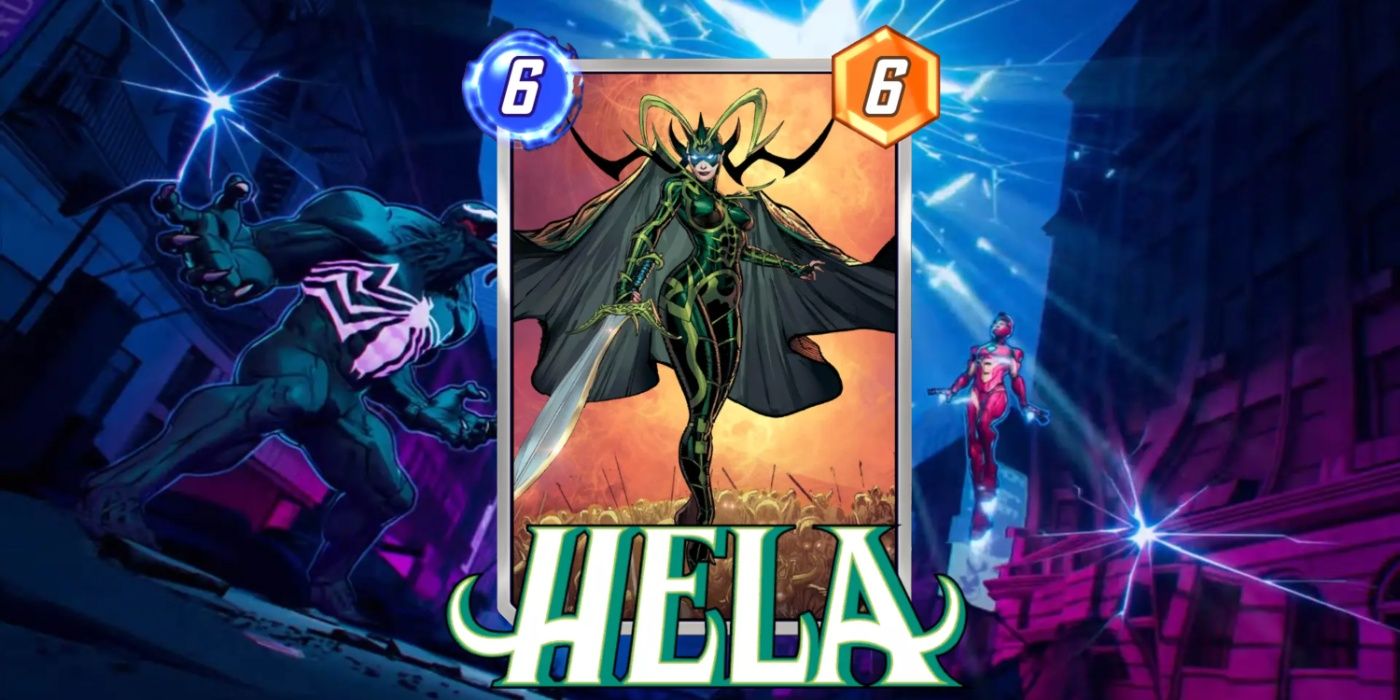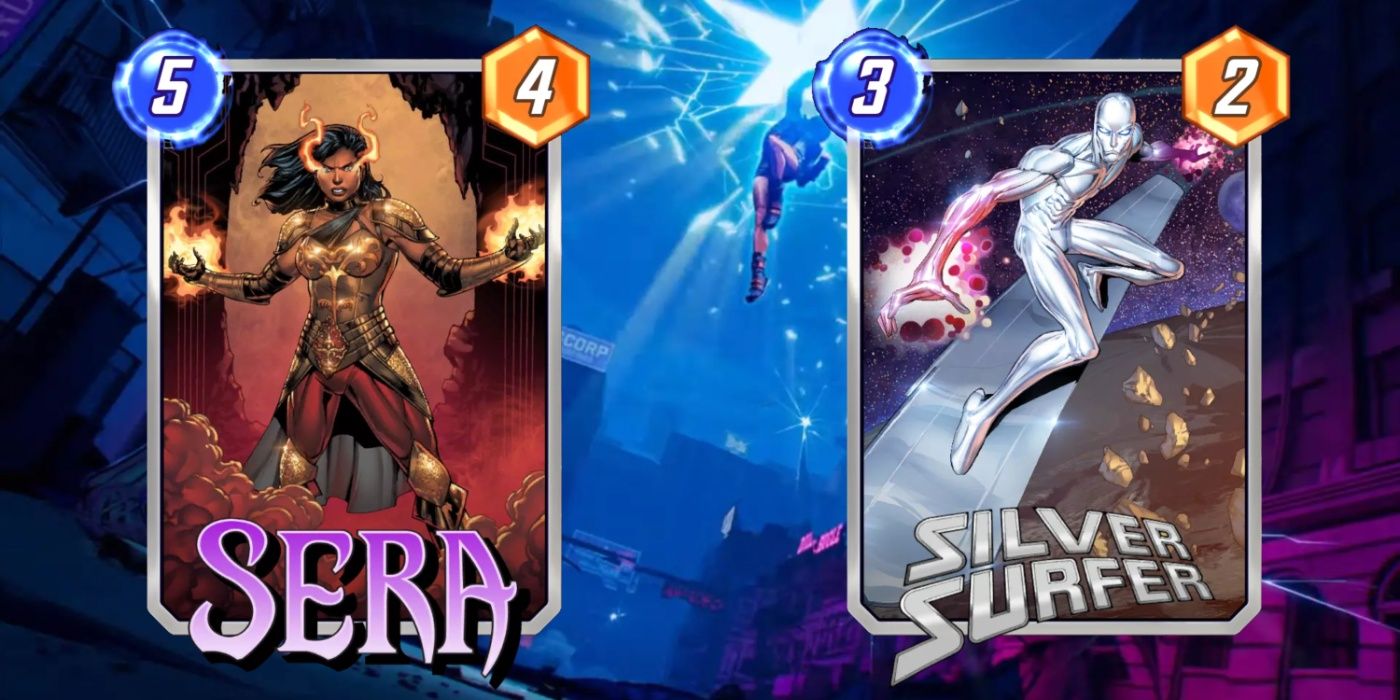Marvel Snap's ever-changing meta can change the entire landscape of the game, and the recent July 20th OTA Update has done exactly that, but to a larger scale than ever before. New decks have risen to the top in terms of popularity, win-rates, and general enjoyment, while others have had to adapt to various restrictions and amendments.
Through all of Marvel Snap's changes, new cards continue to be added with every new season, which in turn has a huge impact on the effectiveness and viability of certain archetypes. Any combination of 12 cards can have some sort of combination or synergy, and this is where the creativity and ingenuity of Marvel Snap really shines through. While there are countless decks out there that are perfectly capable of winning cubes, helping players climb the ladder, or even winning in Conquest Mode, there are a select few that stand out in the current state of the Marvel Snap meta.
Bounce
Contrary to popular opinion, the Bounce deck that has dominated the recent seasons of Marvel Snap is not dead. The recent OTA Balance Updates did a number on this overpowered strategy, but despite taking nerfs to Kitty Pryde, Spider-Ham and Hit-Monkey, the Bounce deck is still a force to be reckoned with.
The Bounce deck revolves around cards that can return others to the player's hand, allowing them to adjust and adapt on the fly, switching locations and keeping the opponent guessing. With Beast as the main conductor, Bounce became dominant because of its flood of cheap cards in the later turns, which could just overwhelm opponents.
What Cards Make Up The Deck & How To Use It
Both before and after the various nerfs to the Bounce deck, the strategy has revolved around Kitty Pryde's gradual build of Power during the early rounds. Kitty Pryde returns to the player's hand at the start of each turn, but now only gains +1 Power each time. However, she still works wonders in raising Bishop, The Collector, and Angela's Power. Bast serves as a means to grant weaker cards 3 Power to start them off strong, while Spider-Ham disrupts any opposing plans by turning the foe's strongest card into a Pig.
Falcon and Beast are the cards that bounce the others back to the player's hand, but Beast does it with an additional Cost reduction for the cards it targets. The goal of the Bounce deck is to have cheap cards aplenty to be played on the final turn so that they can contribute to Hit-Monkey's Power generation. The ideal end-game for a Bounce deck has The Collector, Bishop, and Angela with high Power, with Mysterio, Kitty Pryde, and other cheap cards having helped Hit-Monkey to bring home the victory. America Chavez serves as a reliable back-up plan for those inevitable times when the player doesn't draw the cards they want.
Possible Substitutions
The Bounce deck is undeniably on its way out of the current meta after the OTA nerfs, at least in terms of its overwhelming dominance and popularity. However, as it is still a fun and competitive deck and archetype, there is still value in experimenting with substitutions. While the core of the Bounce deck should stay the same, card like Iceman, Scorpion, and Korg are generally much more-accessible options to Spider-Ham, and can disrupt in their own respective ways.
Silver Surfer could come in for some limited buffs to 3-Cost cards, namely Beast, Hit-Monkey and Bishop, while cards like Agent Coulson and Agent 13 add random cards to the player's that help to boost The Collector's Power. There are plenty of options to experiment with when it comes to the Bounce deck, but its core should remain untouched.
Counters To Watch Out For
With the Bounce deck in its new nerfed state, Marvel Snap players can expect to see its weaknesses exposed further in the coming weeks, despite it still being strong and competitive. Cards like Sandman and Wave stop multiple cards from being played, while Killmonger can destroy all these pesky 1-Cost cards. Both of these approaches are devastating for Hit-Monkey.
Control decks that utilize cards like Spider-Man and Professor X can shut-off locations and restrict the scope of the Bounce deck's freedom. A well-placed Cosmo can stop Beast and Hit-Monkey in their tracks and, and turn thwart the entire deck, while Spider-Ham can even target these cards directly and turn them into a Pig. Bounce persists in the current meta, but now is the time for new cards and decks to rise up.
Thanos Control
With the Spotlight week for Thanos fast approaching on August 1st, there has never been a better time to put respect on the Thanos Control deck. For the longest time, Thanos has been stuck in Series 5 and ultimately been inaccessible for many Marvel Snap players. But with the Spotlight Caches presenting an upcoming opportunity to get him, more people are about to realize how impactful Thanos is and has been on the Marvel Snap meta for months now.
Thanos' mere existence immediately spawns in the six Infinity Stones, shuffling them into the player's deck. Then, if all six Infinity Stones have been played, Thanos gets +10 Power. Other than the Power Stone that grants this boost, each Infinity Stone has its own ability, as well as allowing the player to draw additional cards when played, which naturally plays into synergies with other cards. This is the basis for the Thanos Control deck, and newcomers to the deck will quickly come to realize why it is so popular.
What Cards Make Up The Deck & How To Use It
As 1-Cost cards, Thanos' Infinity Stones mean that there is always a card to play, and the player doesn't need to float turns. Because of this, there is no real need to have any other 1-Cost cards in the deck. Luke Cage covers against decks that afflict negative Power, as he protects the entire team. The other 2-Costs bring versatility to the deck, as Jeff can reach those supposedly locked-down locations, while Psylocke grants extra Energy for the next turn, allowing a high-Cost card to be played a turn early. Cosmo and Shang-Chi bring a level of card control to the deck, as they can stop opposing On Reveal abilities and destroy high-Power cards respectively.
The Thanos Control deck even has Blue Marvel and Klaw as two examples of 5-Cost cards that can throw extra Power to other cards and locations. Professor X and Spider-Man can be played early thanks to Psylocke and lock down locations, restricting an opponent's space to work with. With five of the six Infinity Stones drawing cards and keeping the hand full, Devil Dinosaur can capitalize on this and deliver serious Power for minimal effort. Rounding off the Thanos Control deck is Iron Lad, which can essentially copy the text of any card in the deck, providing they are on top of the deck at the time. Then Thanos himself brings it home, with either 10 or 20 Power depending on whether all Infinity Stones have been played or not.
Possible Substitutions
Most of the cards in the Thanos Control deck are easily accessible, apart from some notable exceptions. Thanos himself is still a Series 5 card, but will at least be accessible during his Spotlight Cache week in August. While Thanos himself cannot be replaced in this deck, Jeff and Iron Lad are two examples of cards that can be.
Jeff is a card that can move and access restricted locations, and while there are no cards that can do this as well as Jeff, cards like Nebula and Sunspot are cheap options that generate Power as the game rolls on. Nightcrawler is an outlying possibility, but only because it can also take up a spot in a location and then move somewhere else. As for a substitution for Iron Lad, Jubilee and Lockjaw can cycle through other cards from the deck, while Daredevil can show off its well-documented synergy with Professor X by scouting what an opponent plans to do on turn five. Wave, Killmonger, Onslaught, Iron Man, and Doctor Doom are other alternatives that can help to complete the ultimate Thanos Control deck.
Counters To Watch Out For
Thanos Control is all about drawing cards, utilizing Ongoing abilities, and having counters for anything thrown the player's way, but this does actually leave gaps open for counters. Killmonger and Ronan are two counters for the Infinity Stones, as Killmonger destroys them and Ronan benefits from the other player drawing cards and having a full hand.
Enchantress, Rogue, and Echo are obvious threats to any Ongoing abilities that Thanos Control has, while a well-placed Cosmo can thwart Shang-Chi, Psylocke, and Spider-Man. Thanos Control is a great deck, but sometimes cannot keep up with the Power-generation of decks like Destroy, or synergies like Arnim Zola and Black Panther.
Destroy
Destroy is a powerful Marvel Snap deck that is set to get even better in the coming months thanks to future releases, with a main focus on destroying the player's own cards. There are numerous cards that generate Power either by being destroyed, doing the destroying themselves, or just passively, and this deck combines them all.
There are many variations on Destroy decks, but the core cards are always the same. While Destroy decks can be predictable, they are often too dangerous and powerful to counter or deal with, which is especially problematic when going up against Destroy decks in Marvel Snap's Conquest Mode.
What Cards Make Up The Deck & How To Use It
Destroy decks are simplistic in their nature, but seriously effective when executed well. Destroy players want to get their cheaper cards in play as soon as possible, as Yondu can scout an opponent's deck and possibly destroy one of their prized cards, while between Nova, Deadpool, Bucky Barnes, and Carnage, they can gain an impressive lead and maintain priority over the early turns. In addition to Nova and Deadpool, Sabretooth and Wolverine are the other cards that want to be destroyed, with Deathlok and Venom supporting Carnage in obliging them.
While Killmonger is on hand to eliminate enemy 1-Cost cards as well as trigger allied Nova and Deadpool's abilities, Death and Knull are the heavy hitters of the Destroy deck. Death is an 8-Cost 12-Power card that gets cheaper for every card destroyed, while Knull takes on the Power of every destroyed card. Knull and Venom can reach unfathomable heights in terms of Power, and naturally have to be wary of various counters.
Possible Substitutions
The beauty of the Destroy archetype is that there are so many other options that can be added to the deck, with more to come with the impending releases of cards like X-23. This variety gives the deck versatility, as long as the main focus is always to destroy and rack up considerable Power. The newly-buffed Magik is an excellent inclusion as a non-destroy card, simply because she adds an extra turn in which to rack up power. Between them, Magik, Electro, and Wave all allow extra cards to be played during a game, meaning extra destruction.
Nimrod is a 6-Power card that sends duplicates to the other locations when destroyed, which opens a whole new world of opportunities within a Destroy deck that also has Shuri. Iron Lad, Phoenix Force, and Destroyer are additional cards to bring more destruction, while Arnim Zola can be on hand to send high-power Knulls and Venoms to the other locations.
Counters To Watch Out For
Destroy decks rely on On Reveal abilities and cards being destroyed. Therefore, cards like Cosmo and Armor that actively deny these things from happening, are active counters of the deck. A well-placed Cosmo with priority can "destroy" the entire strategy, while cards like Polaris, Aero, and Magneto can do the same by moving cards to undesirable locations.
Shang-Chi will always be there lurking, ready to strike at the likes of Venom and Knull when they are big enough. Knull is even a victim to Ongoing-thief cards like Rogue and Enchantress. Destroy decks have many weaknesses, but sometimes they just have too much overwhelming Power to be defeated in enough of the locations.
Hela Discard
The Discard archetype and deck has evolved in recent seasons of Marvel Snap, and now since the OTA Balance Updates that buffed The Living Tribunal, Hela Discard is back and ready to cause chaos. Hela Discard ultimately relies on high-Power cards being discarded, ready for it to bring them back in the later turns.
There is a lot of luck and RNG involved with the Hela Discard deck, but it is one of the most fun to play with. Hela's randomness of where she distributes the revived cards doesn't even guarantee victory, which gives the deck very little strategy beyond playing the core cards.
What Cards Make Up The Deck & How To Use It
This Hela Discard deck is easy to understand, but difficult to get the ideal cards at the ideal time. This is just the luck of the draw that comes with Marvel Snap however, so players of this deck just need to persevere. The ideal set-up for this deck is to have Invisible Woman hiding M.O.D.O.K. and Hela until the very end of the game. This means that M.O.D.O.K. can discard the player's entire hand, only for Hela to immediately resurrect these cards and send them to random locations.
To make this strategy more likely to work, Hela Discard decks should now have the newly-buffed Magik, who can extend the game by a turn, just in case the player is yet to have the desired cards in hand. Other than Morbius sitting there to gain Power for M.O.D.O.K.'s discards, the rest of the deck is made up of high-Power cards that can win the game with the final flood. The Living Tribunal is there to spread this overwhelming Power across all three locations, in what should be the finishing blow.
Possible Substitutions
When it comes to possible substitutions for a Hela Discard deck, they ultimately lean towards high-Power alternatives that can help when resurrected by Hela, over the typical Discard cards like Dracula and Lady Sif. Onslaught, Blue Marvel, and Orka are all Ongoing cards with serious Power-outputs, while the likes of Doctor Doom, Iron Lad, Odin, and America Chavez can also help secure victory.
Additional tweaks can even be made to be more proactive during the early rounds, but cards like Nebula and Sunspot aren't necessarily vital to the deck's success. As long as Invisible Woman, M.O.D.O.K., Hela, and The Living Tribunal are included, then this deck has a chance of working its magic.
Counters To Watch Out For
As the Hela Discard deck literally relies on luck of the draw, the deck's main counter is itself and RNG. However, there are cards that also present a clear threat to this high-risk high-reward strategy.
Rogue and Enchantress can spoil the Invisible Woman strategies, while cards like Doctor Octopus, Galactus, Professor X, and Storm can ultimately restrict access to the other locations and limit the deck's potential. Cosmo is once again the foil of a major Marvel Snap deck, simply because it stops On Reveal abilities. In the case of the Hela Discard deck, this means that M.O.D.O.K. and Hela would be unable to perform their duties and would be simple 8- and 6-Power cards respectively.
Negative Sera Surfer
Silver Surfer and Sera have been a great deck combination in the Marvel Snap meta for several seasons now, but with the recent OTA Balance Updates, there is a new variation in circulation that has emerged as one of the best decks in the game. Mister Negative slots seamlessly into this new Negative Sera Surfer deck, which serves up numerous win conditions and plenty of fun.
As with any Silver Surfer deck, almost any 3-Cost card can slot in, and thanks to Mister Negative's ability to switch Energy and power around, there are plenty of low-Power cards that can also work here. However, there is one specific list that is seriously formidable both in Conquest Mode and on the competitive ladder.
What Cards Make Up The Deck & How To Use It
The main goal with any Mister Negative deck is to draw and play him as early as possible, with the hopes of swapping the Energy and Power around of several cards that are still in the player's deck. With a Zabu Cost reduction, Mister Negative can be played as early as turn 3. Having 0-Power cards like Iron Man, Ironheart, and Mystique is incredible when Mister Negative gets to swap their stats, but even when they narrowly miss that synergy, Bast can give these cards 3 Power if they are in-hand.
Magik and Wong are in this Negative Sera Surfer deck to maximize the number of turns and Power output. The rest of the deck can then be made of 3-Cost cards that can be buffed by Silver Surfer and made cheaper by Sera. The main requirement for these additional cards, however, is that their Power is less than their cost, making them ready for that Mister Negative Switch. This is why cards like Brood and the newly-nerfed Hit-Monkey are perfect additions. In fact, Zabu is the only card in this deck that doesn't benefit from Mister Negative's shenanigans.
Possible Substitutions
The criteria for substitutions and replacements in the Negative Sera Surfer deck is that the cards have less Power than Energy, or are 3-Cost cards. Those that tick both boxes are incredibly viable for the deck. Psylocke is a valid alternative to Zabu, as it can also ensure Mister Negative is played on turn 3, while it can also benefit from the Power and Energy swap if needed.
3-Cost cards like Wolfsbane, Rogue, and Bishop are all natural fits for the deck, especially Bishop, which can increase its Power with each card played. Blue Marvel then represents additional cards that benefit from the swap, but can also provide Power and support to aid the deck's surge towards victory. There are many variations of the Negative Sera Surfer deck, but any additions have to pull their weight.
Counters To Watch Out For
Negative Sera Surfer does still have its counters, but these are mostly familiar names, from Enchantress and Shang-Chi to Cosmo. However, cards that restrict the opponent from playing multiple cards are always going to harm Sera Surfer decks, no matter the variant.
Sandman and Wave are the main names of note here, but Leech and Galactus are those classically hated cards that just squash this fancy strategy. Negative Sera Surfer deck isn't always guaranteed to generate unstoppable levels of Power, so some Destroy decks may be able to outclass it in the end. Otherwise, this deck is seriously powerful and fun to play with.

